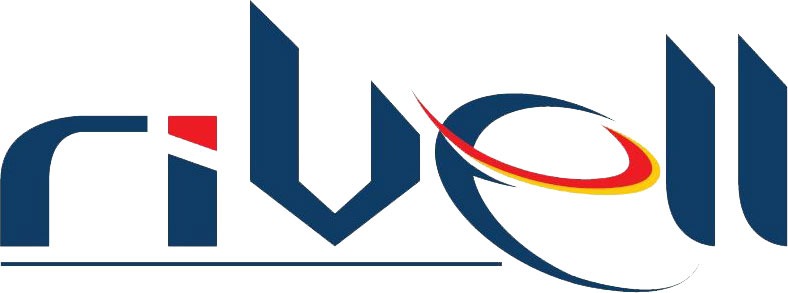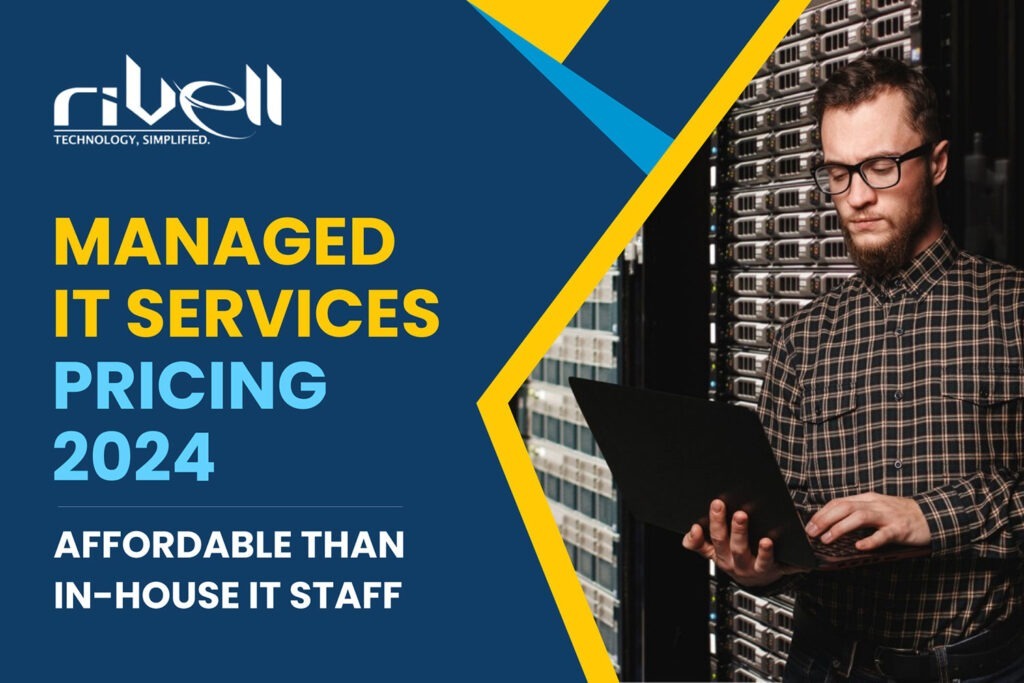Introduction
The capital invested in expanding business production or spent overcoming unnecessary business challenges decides success or failure. One business area where companies drain hefty capital is downtime; even giant organizations like Facebook and WhatsApp are vulnerable to it.
According to a Pingdom study, most businesses suffer for almost $100,000 with only an hour of downtime.
Big sharks may absorb the downtime cost, but it becomes difficult for small fish to survive. That’s where managed IT services are heroic in saving costs from cyberattacks, predicting network outages, backing up data and recovery, and upgrading technologies from obsolete ones.
Having said that, you must be wondering how much this peace of mind costs. Well, this blog is an answer to understanding managed IT services pricing and making informed decisions. We have curated information on factors influencing managed IT services cost, different pricing models, types of IT services, and how to choose a managed IT services provider.
So, buckle, and let’s get started.
What is Managed IT Services (MSPs)?
Managed IT services are an affordable alternative to hiring an in-house IT support team. Businesses can leverage a comprehensive suite of IT services, including network security, data backup, routine server maintenance, and proactive vulnerability management by outsourcing these tasks to a Managed Service Provider (MSP).
It allows internal resources to focus on core business activities while ensuring a robust and secure IT infrastructure, ultimately fostering improved decision-making and peace of mind. With the comprehensive approach to outsourcing IT management, businesses must look for different types of managed IT services and choose one or couple that align with their specific requirements.
8 Types of Managed IT Services
Managed IT providers offer various IT services and solutions addressing different business challenges. Below is the breakdown of the crucial IT support and services.
1. Network Security
A Managed IT solutions provider has a group of certified professionals who proactively monitor your business network 24/7. They hinder suspicious activities, implement firewalls and intrusion detection systems, and update security patches to protect your data and resources from vulnerabilities.
2. Data Backup & Disaster Recovery
Another crucial managed IT service you can expect from providers is data back and recovery or disaster recovery. MSPs create and maintain data backup and rapidly recover in case of hardware failure or ransomware attacks.
3. Help Desk & User Support
MSPs can even offer remote IT support to you and address several challenges like resetting passwords, software installation, and troubleshooting even without having physical access to systems.
4. Infrastructure Management
The hired IT support manages your servers, computer devices, network devices, and IT components, keeping every system optimally performing and eliminating downtime.
5. Cloud Services
Cloud migration, cloud app management, and cloud security are some of the cloud services you can expect from a managed IT services provider. Cloud computing offers business scalability and flexibility.
6. Compliance Management
As a business owner, you can even expect suggestions and guidance on complying with industry regulations and data privacy laws, which can help you overcome security risks and fines.
7. IT Procurement
A managed IT services provider can even become your helping hand in assisting with finalizing, acquiring, and installing new hardware and software solutions that meet business needs and budgets.
8. Voice Over Internet Protocol
MSPs offer VoIP services like setup, training, integration, configurations, management, and maintenance. The providers can handle tasks efficiently, ensuring businesses run smoothly without interruption in VOIP services.
Managed IT Services Pricing Models
Outsourcing IT services always remains more affordable than hiring in-house IT support staff because you get expertise, resources, and IT professional knowledge. We have listed down different managed IT services pricing models so that you can understand each one of them and make informed decisions based on your requirements.
1. Per Device Model
As the name says, this managed IT services pricing model allows businesses to hire MSPs by paying them on a device basis. Companies get to choose between two pricing: either flat monthly IT support or fixed annual fees. MSPs could manage equipment like computers, laptops, mobiles, servers, and tablets. The average pricing in the per-device model ranges somewhere between $40-$275 per month per device.
2. Per User Model
Another managed services pricing model on the list is the per-user model, under which businesses are required to pay per employee. From a business person’s perspective, this pricing model is beneficial to ones who handle multiple systems like laptops, PCs, tablets, and servers. This model ranges between $100-$200 per user per month.
3. A-La-Carte Model
Under this IT-managed services pricing model, you, as a business, can choose services according to your requirements. The services are priced with fixed monthly and yearly fees, and you can add or stop services according to your requirements. Customization according to requirements is the unique selling point for this IT services pricing model.
4. Monitoring Only Model
Under this pricing model, MSPs constantly monitor security threats to your network. Businesses with a minimum budget and in-house IT staff may opt for this model. However, this model comes with a major challenge: keeping the capital ready for uncertainty, which may dampen the IT budget.
5. Tiered Pricing Model
This managed services pricing model comes with a package for the business, under which the price and the services increase as the tiers increase. Small businesses can take the optimum advantage of such a pricing model by increasing tiers as their business grows and paying accordingly. The pricing packages are often categorized under bronze, silver, gold, and platinum, for which you can connect with us and get a detailed idea about it.
Read More : Tier 1 vs Tier 2 vs Tier 3 IT Support Tiers
6. All-You-Can-Eat Model
This is an all-in-one managed IT services pricing model under which per-user and per-device costing are covered. The professionals providing MSP are accountable for offering myriad IT support, services, and solutions.
Factors Contributing to Managed IT Services Cost
Several factors influence the IT services pricing mentioned above. To give you an in-depth idea, we have listed those factors below so that anytime you are looking for MSPs, you know what needs to be considered.
1. 24/7 IT Support
Basic plans might provide coverage during business hours, while 24/7 support ensures a safety net around the clock. This increased availability comes at a higher cost, but the benefits can significantly improve your business continuity. MSPs offer 24/7 support to businesses remotely and provide software-related services. They provide services through ticketing systems, wherein they resolve tickets on a priority basis.
2. Dedicated Resources
Managed IT services offer a spectrum of support options. While basic plans might offer reactive solutions, dedicated resources are proactive. This personalized service comes at a premium, but the benefits can significantly impact your bottom line. Unlike shared resources, dedicated technicians become an extension of your team. They understand your specific IT infrastructure, proactively identify potential issues, and tailor solutions to your unique needs. This focus minimizes downtime, maximizes efficiency, and reduces the likelihood of costly emergencies.
3. Data Backup & Recovery
Managed IT services offer various tiers, and data backup and recovery are key differentiators. While basic plans might leave you scrambling in case of data loss, comprehensive backup solutions ensure peace of mind at a slightly higher cost.
4. Security Against Vulnerabilities
While basic managed IT services can improve efficiency, robust cybersecurity measures often come at an additional cost. But don’t view this as just an expense; consider it an investment in your business’s future. Cybersecurity threats constantly evolve, and a dedicated MSP can provide advanced protection. They’ll monitor your network for suspicious activity, implement firewalls and intrusion detection systems, and ensure your data is encrypted. This comprehensive approach minimizes the risk of costly data breaches, downtime, and reputational damage.
5. Software & Hardware Control
Managed IT services offer varying degrees of control over your software and hardware. While lower-priced plans might focus on essential monitoring, comprehensive plans offer complete management. This increased control comes at a higher cost, but the benefits can be significant. By taking control of your software and hardware, the MSP ensures compatibility, optimizes performance, and eliminates licensing headaches. They handle updates, patches, and routine maintenance, freeing your internal IT team (if you have one) to focus on strategic initiatives.
6. Tracking & Reporting
Managed IT services often include essential monitoring, but comprehensive tracking and reporting go a step further. This service upgrade influences the cost, but its value can result in significant cost savings.
7. Device Count
Your number of devices directly impacts the cost of managed IT services. Each device, from desktops and laptops to tablets and smartphones, requires security patching, software updates, and potential troubleshooting. As the number of devices grows, so does the workload for your IT provider.
8. Service Level Agreement Type
A Service Level Agreement (SLA) is your managed IT services roadmap. It clearly outlines the specific services you’ll receive and the level of performance you can expect. But this clarity comes with a cost consideration. The more stringent your requirements are – for example, demanding near-perfect uptime or speedy response times – the higher the price will likely be. The provider must dedicate more resources and expertise to meet those high standards.
Conclusion
At Rivell, we understand that every business has unique IT needs and budgetary constraints. That’s why we offer a variety of managed service plans to ensure you get the right level of support without breaking the bank.
While factors like the number of devices and service level agreements (SLAs) can influence cost, we believe in transparent pricing and clear communication. Our team will work closely with you to assess your requirements and develop a customized plan to optimize your IT investment.
We’re confident that by partnering with us, you’ll experience the benefits of proactive IT management and see a positive return on your investment through increased efficiency, reduced downtime, and enhanced security.
Feel free to reach out to us by submitting a contact form or by giving us a call at (609) 422-5900. We’re here to help tailor our managed service plans to fit your unique IT needs and budgetary constraints.












